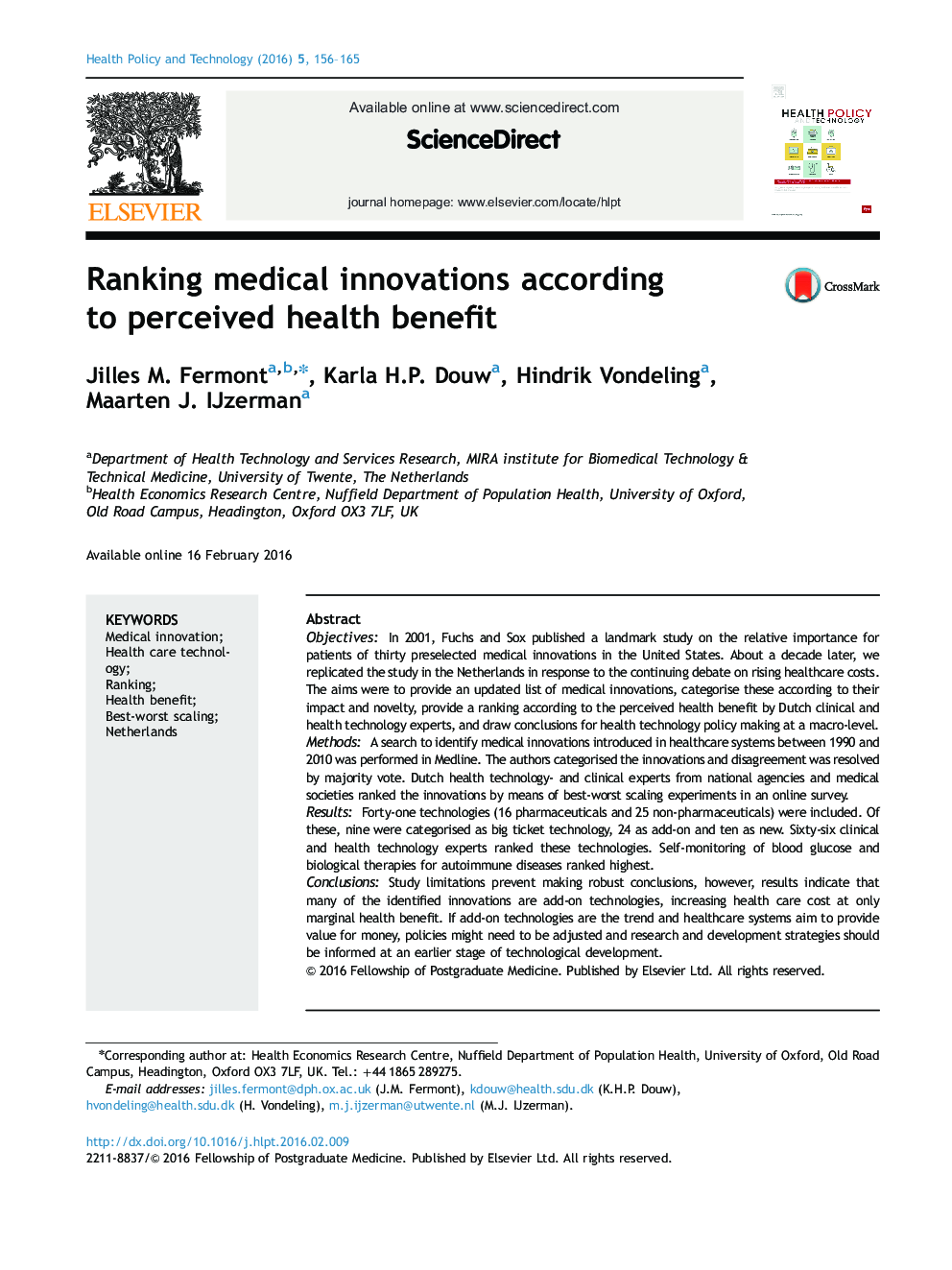| کد مقاله | کد نشریه | سال انتشار | مقاله انگلیسی | نسخه تمام متن |
|---|---|---|---|---|
| 3327259 | 1212164 | 2016 | 10 صفحه PDF | دانلود رایگان |
• Medical innovations of the past decade are ranked according to health benefit.
• Innovations are categorised according to cost impact and true innovativeness.
• Highest ranked innovations reflect the focus of care for an ageing population.
• Most innovations are add-on, with cost-impact depending on its utilisation.
• Pro-active policy-making is required to optimise utilisation and value for money.
ObjectivesIn 2001, Fuchs and Sox published a landmark study on the relative importance for patients of thirty preselected medical innovations in the United States. About a decade later, we replicated the study in the Netherlands in response to the continuing debate on rising healthcare costs. The aims were to provide an updated list of medical innovations, categorise these according to their impact and novelty, provide a ranking according to the perceived health benefit by Dutch clinical and health technology experts, and draw conclusions for health technology policy making at a macro-level.MethodsA search to identify medical innovations introduced in healthcare systems between 1990 and 2010 was performed in Medline. The authors categorised the innovations and disagreement was resolved by majority vote. Dutch health technology- and clinical experts from national agencies and medical societies ranked the innovations by means of best-worst scaling experiments in an online survey.ResultsForty-one technologies (16 pharmaceuticals and 25 non-pharmaceuticals) were included. Of these, nine were categorised as big ticket technology, 24 as add-on and ten as new. Sixty-six clinical and health technology experts ranked these technologies. Self-monitoring of blood glucose and biological therapies for autoimmune diseases ranked highest.ConclusionsStudy limitations prevent making robust conclusions, however, results indicate that many of the identified innovations are add-on technologies, increasing health care cost at only marginal health benefit. If add-on technologies are the trend and healthcare systems aim to provide value for money, policies might need to be adjusted and research and development strategies should be informed at an earlier stage of technological development.
Journal: Health Policy and Technology - Volume 5, Issue 2, June 2016, Pages 156–165
